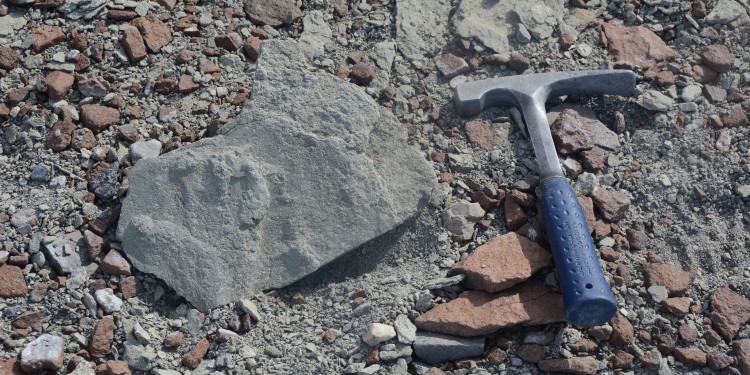
Dr. Benjamin Bomfleur on finding a reptile footprint in the Antarctic
Around three years ago, researchers on an Antarctic expedition, including Münster University palaeobotanist Dr. Benjamin Bomfleur, made an incredible discovery in northern Victoria Land. They found the 200 million-year-old footprint of an extinct reptile. The researchers have now published their findings from the hand-sized footprint in the journal “Polar Research”. Norbert Robers spoke about the find with Benjamin Bomfleur from Münster University’s Institute of Geology and Palaeontology.
At that time, in 2015/16, were you actively looking for tracks because you suspected you might find some – or was it literally entirely unexpected?
The expedition was undertaken by the Federal Institute for Geosciences and Natural Resources (BGR), and included Dr. Thomas Mörs from Stockholm and myself as a “two-man palaeontology team”. The composition and the age of the rock layers in the remote study area where we had our camp were virtually unknown. This meant that we had only a vague idea of what to expect. Naturally, though, we set out into the field with a slight hope that we might discover dinosaur fossils in this region of the Transantarctic Mountains. When the footprint was revealed, however, we were still astonished. Ironically, it was the Italian tectonics specialist, Dr. Laura Crispini from Genova, who made the actual discovery –the one in our geology team who is least involved in studying fossils.
The fossil footprint is around 200 million years old. How would you assess the discovery from a scientific point of view?
The find is absolutely fascinating, in several respects. Vertebrate fossils have been known for a long time now in the Eastern Antarctica, but almost all of these come from localities over 1,000 kilometres further south. So far, however, not a single vertebrate fossil had been found in the entire northern part of Victoria Land. Also, our discovery comes from rock layers that are much younger than all the other Triassic finds in the Antarctic. This means that this new find fills a significant gap – in both temporal and geographical terms – in the vertebrate fossil record from Antarctica.
Will there now be further expeditions to this region, as more discoveries are now expected?
I hope so – and the chances are good. Expeditions to this area of the Transantarctic Mountains have been undertaken more or less regularly by the BGR since 1979 as part of the GANOVEX series of expeditions (German Antarctic North Victoria Land Expedition), which facilitates a wide range of geological and geophysical research apart from palaeontology. My PhD student, Jan Unverfärth, was down there just recently on the previous field trip as part of the 13th GANOVEX with Dr. Andreas Läufer and Dr. Thomas Mörs, among others.
...and with some equally spectacular findings?
They did at any rate find substantial deposits of fossils at previously unknown sites! Most of them are plant fossils, which can provide important information about the age of the rocks and the environmental conditions existing at that time. Unfortunately, there were no vertebrate remains among the discoveries, but that’s no reason to give up hope. Who knows? Maybe one day we’ll finally find the fossil remains of the actual animal that left this curious footprint.
